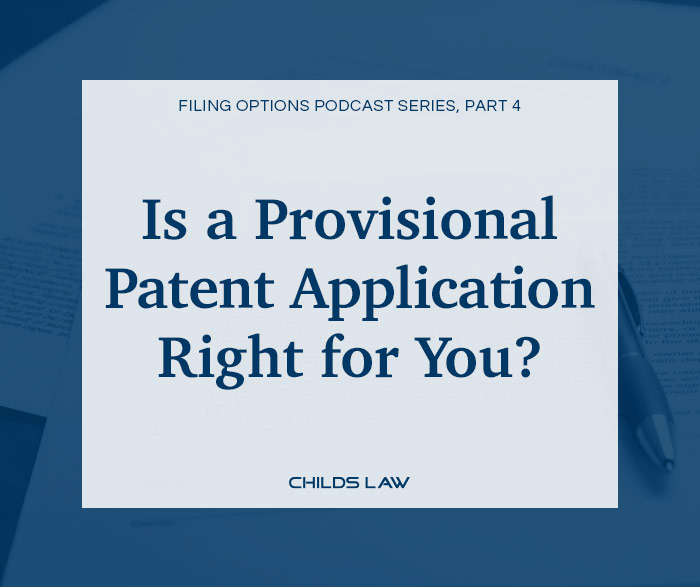
One of the most common questions I get is: should I file a provisional patent application?
The answer to this question depends on what you need.
To put this answer into context, it’s important to understand what a provisional application is and what a provisional patent application is not.
A provisional patent application is basically an official letter to the United States Patent and Trademark Office (USPTO) that a basically says: you want to file a patent application, but you’re not quite ready yet. But if you do, you want to hold your place in line.
In other words, a provisional patent application is a confidential placeholder that holds your place at the patent office for up to one year.
Now let’s talk about what a provisional patent application is not. A provisional patent application is not a patent application that can issue as a US patent. This point is so important that I’ll repeat it. A provisional patent application – by itself – will never result in a US patent. A provisional patent application can only serve to secure a priority date for a non-provisional patent application.
Provisional Patent Application = Confidential + Placeholder + Up to 1 year.
You might be tempted to ask: if a provisional patent application alone can only serve as a basis for filing a non-provisional patent application, then what’s the point of filing a provisional patent application at all? Why not just file a non-provisional patent application?
The power of a provisional patent application is that they are kept confidential and allow for changes to be made for up to 1 year. In other words, once you file a provisional patent application, you have up to one year to make ANY CHANGES you want before filing a non-provisional patent application. You can change your design, make corrections, or add data.
This may not seem that important. But what if you talk to a marketing consultant, an engineering expert, or a potential investor and they suggest that you make changes to your invention to improve your sales, manufacturing, or their willingness to invest? With a non-provisional patent application, you are stuck. With a provisional patent application, you can make those improvements.
For this reason, provisional patent applications are often best used by startups and entrepreneurs who want to win the race to the patent office but need time to improve their invention and to talk with investors and advisors before committing to a non-provisional patent application.
Want to file a provisional patent application before talking anyone?
Call Childs Patent Law at 832-621-0353 and let’s hold your place in line.